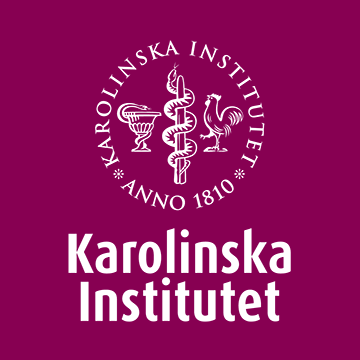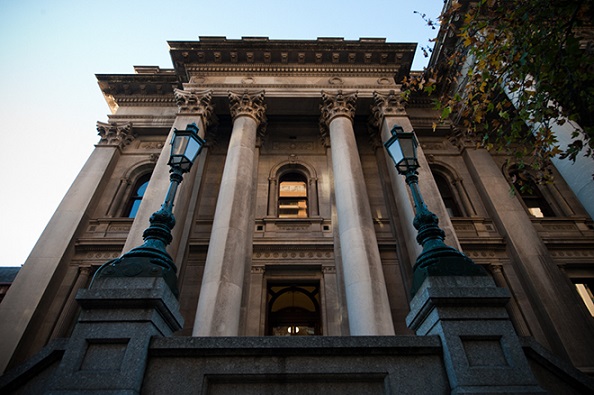
Marine research laboratories at the Institute for Marine and Antarctic Studies’ (IMAS) Taroona site have played a significant role in the evolution of Tasmania’s fisheries and aquaculture science for over 50 years.
After opening in 1970, the facility was first operated by the Department of Agriculture before becoming the Tasmanian Aquaculture and Fisheries Institute (TAFI) in 1998, and IMAS a decade later.
Now, the research centre is undergoing its first major upgrade, which will see the site transformed into a world-class fisheries and aquaculture precinct.
Here’s how the waterfront site has positively impacted Tasmanian fisheries and aquaculture (F&A) research over the past five decades, and what the improvements will mean for present and future scientific efforts.
A rich agricultural past: the Taroona Quarantine Station

Long before IMAS Taroona was an F&A research facility, it was home to the now partially heritage-listed Taroona Quarantine Station, which operated between 1891 and 1975.
The State Government established the station for landowners and farmers to quarantine livestock, dogs and cats imported from the United Kingdom, to prevent diseases from entering Australia.

The government purchased part of the property Nubeena for the station as it was close to the River Derwent and Hobart, and had a deep-water anchorage. A weatherboard Caretaker’s Cottage was constructed in 1908 and was later repaired and renovated in 1938 and 1949, and again in 2023 as part of the most recent development by University of Tasmania.
The station also hosted explorer Sir Ernest Shackleton’s huskies at least twice in 1914, during preparations for his journey to Antarctica as part of the 1914–1917 Imperial Trans-Antarctic Expedition onboard the ship Endurance.
Shifting priorities and a new research facility

The quarantine station’s use began to diminish in the late 1940s. By early 1970, the State Government opened the $300,000 Taroona Marine Research Laboratories on part of the station site. The government led a range of F&A research activities at the facility until the late 1990s.
Fisheries research focused on rock lobster, sea urchins, scalefish, trawling and pelagics, squid, scallops and abalone, and metals in seafood. Aquaculture research included oysters and Atlantic salmon which led to the development of these industries in Tasmania, along with scallops, mussels, abalone, Striped trumpeter, Yellowtail kingfish, Banded morwong, flounder and rock lobster.
Between the late 1980s and early 1990s, two new wings, a library, conference room and reception were added to the main Taroona building, with a shed built for research vessels, equipment and aquaculture. A new aquarium building was built in the mid-1990s for land-based wild fishery experiments, and ecological and aquaculture research.
State Government teams up with the University of Tasmania
A desire to continue growing F&A research led to the State Government partnering with the University of Tasmania to form TAFI in 1998, based at the Taroona facility.
“A key part of TAFI was a funding agreement between the Tasmanian Government and UTAS, which later became the Sustainable Marine Research Collaboration Agreement (SMRCA) under IMAS,” said SMRCA Director, Professor Caleb Gardner.
“TAFI and the SMRCA’s purpose was to deliver world-class and independent fisheries and aquaculture research that informed the sustainable management of Tasmania’s living marine resources.”
In 2009, the University brought marine research together under IMAS, with the Taroona site becoming the IMAS Fisheries and Aquaculture Centre. It currently includes an office building, five laboratories, a large range of experimental aquaculture and animal holding facilities, a dedicated Experimental Aquaculture Facility addressing salmon production, diet and climate change adaptation research, and holding facilities for a fleet of vessels and equipment.

The SMRCA partnership was renewed last year through to 2032, marking the State Government’s 34-year commitment to research that underpins sustainable fisheries and aquaculture in Tasmania.
“Our current fisheries and aquaculture research focuses on the status of key commercial and recreational target species, with our skillset at IMAS also allowing us to collaborate with researchers, ecologists and biodiversity specialists on assessing ecosystems associated with these sectors,” said IMAS F&A Centre Head, Professor Sean Tracey.
“We are also broadening our research to focus on contemporary issues, including marine biotoxins and diseases in species like shellfish, along with socio-economic research to ensure we’re capturing all aspects of successful fisheries and natural marine resource management.
“Our aquarium building is also home to rock lobster, Pacific oyster and seaweed aquaculture research, along with the captive breeding of the critically endangered Red handfish and Maugean skate.”
IMAS marine ecologist Associate Professor Neville Barrett has worked at the Taroona centre for over 30 years, witnessing many changes to the site. He is excited about the next revamp.
“It’s been rewarding to watch the facility and our research capability grow and to have worked with many great researchers here,” he said.
From quarantine station to wildlife conservation
The quarantine station closed in 1975 and by 1990 the than Tasmanian Parks and Wildlife Service’s Threatened Species Unit was using the remaining land and sheds for its Taroona Wildlife Centre, with a focus on Orange-Bellied Parrot conservation.

Aviaries were built for captive breeding and the station’s cottage, which IMAS refurbished in 2023, was converted into a home for the program’s caretakers and volunteers, who lived there from 1990 until 2011.
During the 1990s, the Department of Natural Resources and Environment Tasmania (NRE Tas), formerly known as the Department of Primary Industries, Parks, Water and Environment (DPIPWE), also used part of the centre for whale stranding responses, with a shed built for whale rescue vessels, along with freezers and a wet lab for whale and seal autopsies. By the mid-2000s, the Tasmanian Devil Captive Breeding Program was also set up on site, with enclosures built to house devils.
In 2008, a section of land from the former quarantine station was added to the Tasmanian Heritage Register, including the cottage and the wildlife centre land.
During the 2010s, the government transferred this heritage-listed quarantine station land and wildlife centre to the University, and by 2019 relocated the parrot and devil programs.
Looking towards an exciting future…
The critical research IMAS has led at the Taroona facility, in partnership with NRE Tas, has helped build an understanding of climate change, preserved the marine environment and wild fisheries, monitored the sustainable development and impacts of aquaculture, and contributed to the conservation of threatened species.
The current Taroona upgrades will strengthen this work, with the construction of a new teaching and research building that will equip students with real-world learning experiences alongside local and international research leaders.
A new state-of-the-art krill research aquarium will also be built for world-leading Antarctic krill research, conservation and management, in partnership with the Department of Climate Change, Energy, the Environment and Water’s Australian Antarctic Division (AAD).
Professor Sean Tracey said the redevelopment is the next step in our F&A research collaboration with NRE Tas, and our Southern Ocean research partnership with the AAD.
“Five decades of marine research at the Taroona centre has enabled the sustainable growth of Tasmania’s fisheries and aquaculture sectors, with this redevelopment to build on these foundations as we look to the future,” Professor Tracey said.
Visit our IMAS Taroona Transformation webpage







